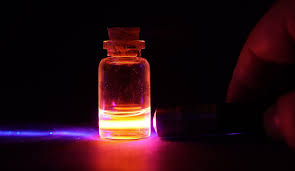
Breaking News
 LIVE ELECTION RESULTS: New York mayor, NJ & VA governor, Prop 50, Trump endorsements, latest vote
LIVE ELECTION RESULTS: New York mayor, NJ & VA governor, Prop 50, Trump endorsements, latest vote
 Sen. Markwayne Mullin Reveals Schumer Held Secret BACKROOM MEETING...
Sen. Markwayne Mullin Reveals Schumer Held Secret BACKROOM MEETING...
 RIP NYC - Muslim Communist Zohran Mamdani Wins New York City Mayoral Race
RIP NYC - Muslim Communist Zohran Mamdani Wins New York City Mayoral Race
 Dramatic Footage Shows UPS Cargo Jet Crashing At Louisville Airport
Dramatic Footage Shows UPS Cargo Jet Crashing At Louisville Airport
Top Tech News
 Japan just injected artificial blood into a human. No blood type needed. No refrigeration.
Japan just injected artificial blood into a human. No blood type needed. No refrigeration.
 The 6 Best LLM Tools To Run Models Locally
The 6 Best LLM Tools To Run Models Locally
 Testing My First Sodium-Ion Solar Battery
Testing My First Sodium-Ion Solar Battery
 A man once paralyzed from the waist down now stands on his own, not with machines or wires,...
A man once paralyzed from the waist down now stands on his own, not with machines or wires,...
 Review: Thumb-sized thermal camera turns your phone into a smart tool
Review: Thumb-sized thermal camera turns your phone into a smart tool
 Army To Bring Nuclear Microreactors To Its Bases By 2028
Army To Bring Nuclear Microreactors To Its Bases By 2028
 Nissan Says It's On Track For Solid-State Batteries That Double EV Range By 2028
Nissan Says It's On Track For Solid-State Batteries That Double EV Range By 2028
 Carbon based computers that run on iron
Carbon based computers that run on iron
 Russia flies strategic cruise missile propelled by a nuclear engine
Russia flies strategic cruise missile propelled by a nuclear engine
 100% Free AC & Heat from SOLAR! Airspool Mini Split AC from Santan Solar | Unboxing & Install
100% Free AC & Heat from SOLAR! Airspool Mini Split AC from Santan Solar | Unboxing & Install
Scientists Invent Ingenious Emission-Free System to Bottle Solar Energy in the Summer to ...

This ground-breaking new solar-powered battery is giving the fossil fuel industry reason for concern.
After decades of research, prototypes, and trials, the first sustainable solar-powered storage system is underway and it is poised for commercial release within the next 10 years.
Only one year ago, a research group from Chalmers University of Technology in Sweden presented a special kind of molecule that was capable of retaining energy harnessed from solar panels. Today, this same team has developed the system so that it can use this molecule in liquid-form to heat homes, run appliances, and ultimately reduce – if not eliminate – our need for fossil fuels.
The Molecular Solar Thermal Energy Storage (MOST) uses existing technologies to turn thermal energy and water into steam, which can then be turned into electrical energy. By using their specially-designed liquid to store energy from the sun, the system is also entirely non-toxic and reusable for hundreds of cycles.
"We've run it though 125 cycles without any significant degradation," team researcher Kasper Moth-Poulsen told NBC News.
Taken together, the advances mean that the energy system MOST now works in a circular manner. First, the liquid captures energy from sunlight in a solar thermal collector on the roof of a building. Then it is stored at room temperature, leading to minimal energy losses. When the energy is needed, it can be drawn through the catalyst so that the liquid heats up. The warmth could then be utilized in, for example, domestic heating systems, after which the liquid can be sent back up to the roof to collect more energy – all completely free of emissions, and without damaging the molecule.
"We have made many crucial advances recently, and today we have an emissions-free energy system which works all year around," Moth-Poulsen added in a university press release.



